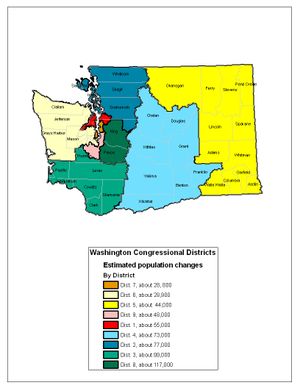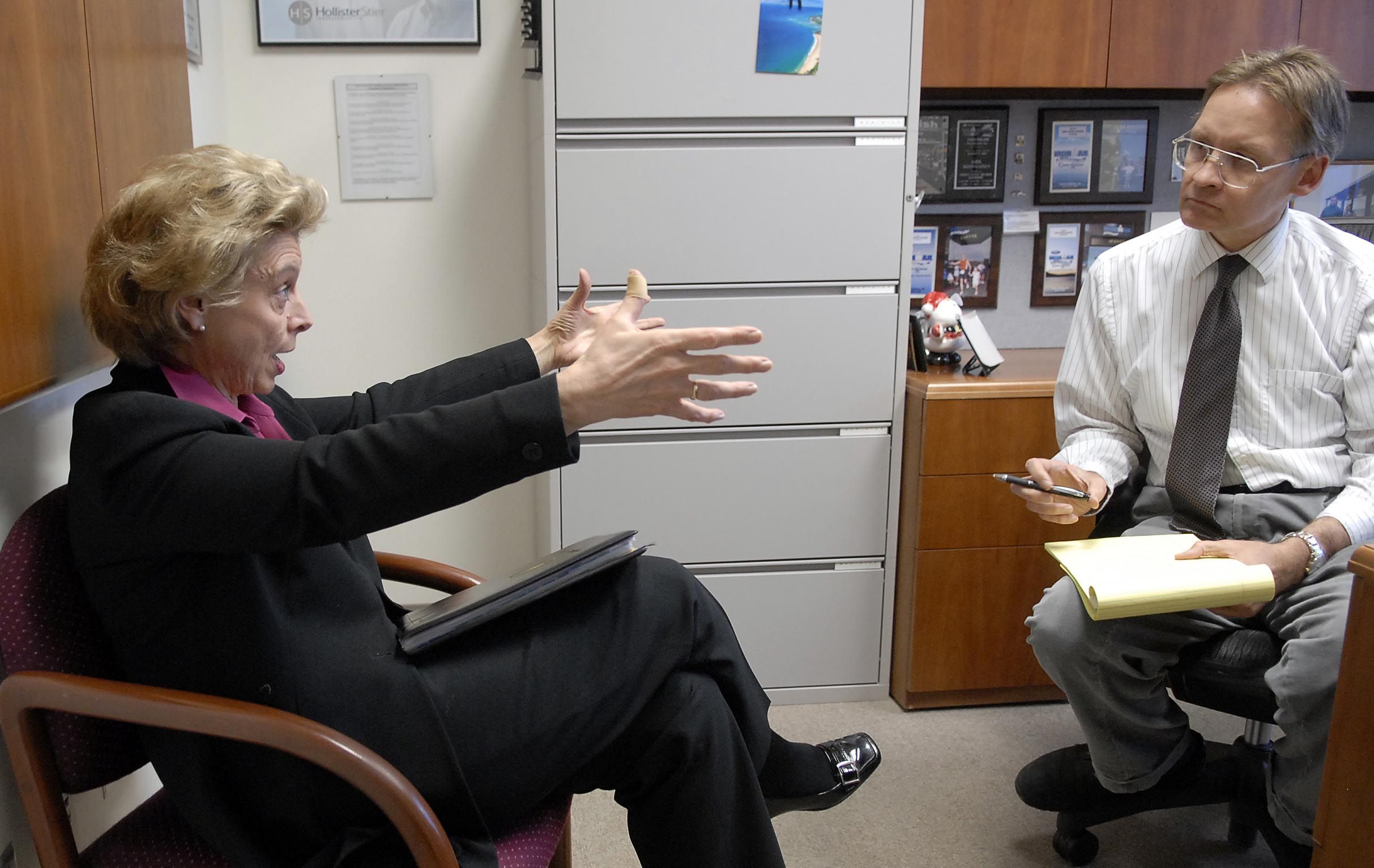Where WA gained a little, where it gained a lot
Washington gets a new congressional district, upping its population in the U.S. House of Representatives from nine to 10, Census Bureau officials announced today.
Politicians all over the state, from Gov. Chris Gregoire, a Democrat, to Luke Esser, state Republican Party chairman, are thrilled. And why not? It will create a whole new congressional race in 2012.
"At a critical time in our nation’s history, not only do I welcome the additional representation in our nation’s Capitol, I am pleased Washington state’s share of federal funding to support critical programs like Medicaid and education will also increase," Gregoire said.
Esser had a slightly different take: "An additional congressional seat gives our state the opportunity to send another voice to Congress to advocate for limited and fiscally conservative federal government. This year our state helped to fire Nancy Pelosi as Speaker of the House...
"...With a new congressional seat we can make even more progress for our nation."
As both note, where this new district will go is up to the Redistricting Commission, which isn't fully constituted yet. The five-member commission has one member appointed by each of the four leaders of the Legislature: the Senate majority leader, the Senate minority leader, the House speaker and the House minority leader. Those four pick a fifth, non-voting member, to head up the commission.
The appointments to the board aren't due until next month, although the two Democratic leaders recently submitted theirs. Senate Majority Leader Lisa Brown of Spokane has appointed Tim Ceis, a former deputy mayor of Seattle, former chief of staff to former King County Executive Ron Simms and a former policy coordinator for former Gov. Gary Locke. House Speaker Frank Chopp has appointed Dean Foster, former clerk of the House, former chief of staff for former Gov. Booth Gardner and a member of the 2001 Redistricting Commission.
The Census Bureau won't release population figures for the current congressional districts, counties, census tracts and census blocks until sometime in February or March, so it's not yet possible to say exactly where all the bodies are. But the Census Bureau did release another set of numbers, a five-year estimate from the American Community Survey, earlier this month, and it did have estimates for the districts.
The numbers don't match perfectly: The 2010 Census count for Washington is 6,724,540; the 2009 ACS estimate was 6,664,195, so there's about 60,000 people moving around out there.
But by plugging the ACS estimates for each district into a spreadsheet and subtracting the district populations when the Redistricting Commission drew the lines in 2001, we can get a good feel for where the biggest growth is. When they were drawn, all the districts were within a few people of 654,900 residents.
As the map above shows, the slowest growth was in urban Seattle and the Olympic Penninsula, which both grew by less than 29,000 people . The highest growth was in suburban King and Pierce counties, which grew by 117,000 people, followed by the the rest of the I-5 corridor from Bellingham down to Vancouver (about 99,000 to the south and 77,000 to the north) and Central Washington's 4th District, which grew by about 73,000..
Eastern Washington's 5th Congressional District had the third slowest growth based on the ACS estimates, about 44,000.
Simple math indicates that a Congressional seat in Washington state is going to hold about 672,454, so all the districts are going to have to lose some people. But the commission has to worry about more than just raw population figures; it also has to try to keep together cities, counties and "communities of interest" whenever possible.
They will also be redrawing the legislative boundaries. There's no increase in the number of legislative districts, but the population shifts could lead to big changes there, also.
The commission will hold hearings around the state, draw up maps and submit them to the Legislature, which can only make minor changes.

